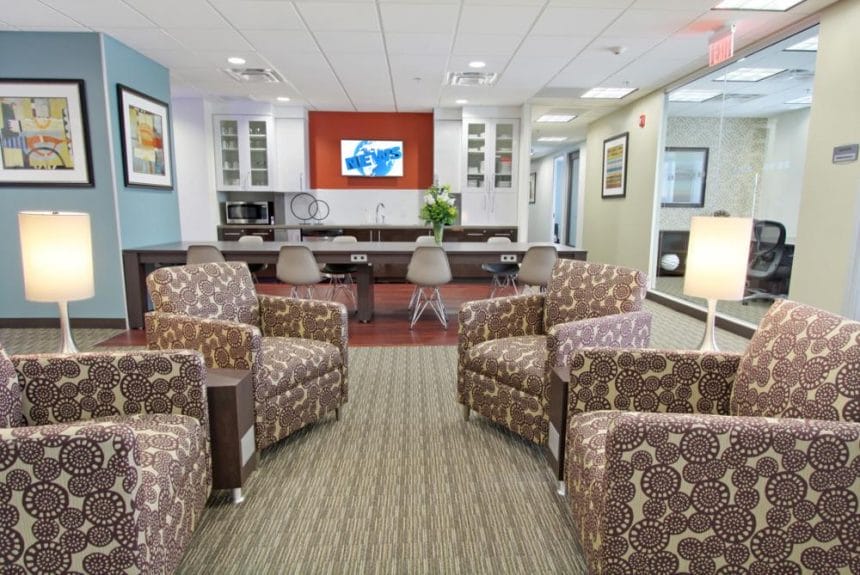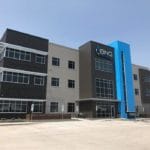Expert
Andy Westby
Commercial Realtor & Auctioneer at GOLDMARK Commercial Real Estate, Inc.
Perhaps you are a brand new business looking to move out of the basement into your first 1,500 square foot office or you are a well-established business that has outgrown your 50,000 square footage industrial building and are thinking it’s time to expand. Regardless of where you fall on the spectrum, there are multiple items to consider that can help you get the best deal and come out a winner in the complex world of commercial real estate!
1. Location, Location, Location
There is a reason this is a common mantra in real estate. Some businesses rely on locating in a high visibility spot on a main arterial road, yet that isn’t the case for most. Prime locations come with prime pricing, which may not always make the most financial sense for your business. If you ask yourself, “Will my sales or profit increase because of where this office is located?” and the answer is no, then focus on B or C locations that meet your key needs (functional use, general geography, parking, etc.) If your business is positively impacted by things like great visibility, high traffic counts and the best accessibility (i.e. retail and service businesses usually), then focus on those prime locations. Just be prepared for higher costs.
2. Own vs. Lease
Many business owners I meet with like the idea of owning their own building. However, there are reasons that many businesses lease space, especially in their early years. Leasing gives businesses better flexibility to grow and expand quickly, it keeps cash in the business and it means less time spent on property issues and more time on your business or with your family. On the other hand, leasing builds no equity over time and your business’s costs can be more variable as well.
Owning has advantages such as more cost certainty for the business, tax benefits and building long term value for the property owner(s). Keep in mind that most commercial loans require 20-25 percent down, which can soak up a lot of cash upfront. The Small Business Administration does offer loans with 10 percent down, though, and all banks love lending on owner-occupied buildings, so shop around for the best financing. Also, ask your lender about Bank of North Dakota financing as their PACE program can help buy down interest rates for certain businesses and deals too. Any banker or commercial realtor can help you analyze a buy/build/lease scenario, so do not be afraid to get an expert involved to help evaluate your options.
3. Fit-up vs. Move-in
When leasing space, there are two primary options to consider:
1) Build out a new space from a vanilla shell (1st generation space)
2) Remodel or move into an existing office (2nd + generation space)
Landlords are usually willing to contribute some significant dollars to fit up first-generation space for tenants. This is referred to as “TIA,” or tenant improvement allowance. In the FM market, for example, we see TIA’s of $30-35 per foot or more depending on the deal terms and tenant. Just remember that tenants usually still end up paying out of pocket to finish their space since construction costs can be $45-65 +/- per square foot to finish out a typical office depending on your needs. However, some owners may be willing to pay the entire fit-up bill and amortize the difference back into your base rent. Going with a new build-out means your business ends up with space designed to your specific needs, but that almost always comes at a higher cost.
If you can find a second-generation space that meets most of your needs already, you can usually get into the space with very little or no out of pocket expense. Landlords will generally pay for things like new carpet, paint and maybe even some light remodeling to get a good tenant into an existing second-generation space as well. How much they will contribute usually correlates directly to how long you will lease it for and the price you are paying. Keep in mind that existing spaces do usually come with some sacrifices where not ALL of your needs and wants may be satisfied, but your costs are likely going to be lower overall.
4. Short term vs. long term
A key decision for most tenants is the term they commit to when signing their lease. Landlords generally prefer longer terms (think 5+ years), while some tenants may prefer a shorter term such as two to three years. Keep in mind, the shorter the term you go, the less likely an owner is to put money into the space or negotiate on key deal points. The flexibility of a shorter term is an advantage to the tenant, so it does remove some of your negotiating power.
Established businesses with a strong handle on their future growth prospects will often lock into five to 10+ year terms to get the best offers from Landlords, while younger or rapidly growing companies often push for shorter terms with renewal options or right of first refusals to protect their flexibility. Neither is right or wrong. It has to be what is best for your business balanced with what the owner is willing to agree to.
5. Know the market
Regardless if you buy, build or lease, it is important to know the market so you can get the best deal possible. Are there lots of options on the market that meet your needs or is the type and size of property you need in short supply? Are properties sitting on the market for a long time or are things leasing/selling quickly right now? You need to know who has what leverage and where you can get an edge. Also, find out what similar properties have sold for or leased at recently to make sure you are “in the market” with your offer before locking into something. Or better yet, find a good commercial realtor you trust who can lead the effort to research, analyze and negotiate the deal for you. They live and breathe these things daily and can help ensure you get the best deal possible.
Q&A
What resources are out there for companies searching for their next office that your customers don’t know about?
There are lots of good resources online for finding office space. Many people assume the national sites such as loopnet.com are the most comprehensive listing services, but that isn’t so in our market right now. The most comprehensive list of properties available would be on the local multiple listing service engine (MLS). A good place to access those listings is the website of just about any of the commercial brokerages in town, such as goldmarkcommercial.com.
This and other brokerage sites give you the ability to search ALL listings in the market, regardless of what brokerage has the property listed. You can filter by type (retail, office, industrial, etc.), size, price, location and much more. When it comes to looking at financing, most commercial lenders are willing to do a quick quote with just a few key pieces of information to give you an idea on the current rates and programs available. If your bank makes you jump through tons of hoops just to get a rate quote, it might be time to find a new banker.
What is the most common mistake you see clients make before starting to search for a property?
Not understanding their needs and/or budget before spending time on property tours. Before setting foot in a new space, be thoughtful about these two items and then filter your list of potential options through them. Too often, clients start touring based on spaces that meet their size or location requirements, only to realize later the space is too expensive or can’t functionally meet their immediate or long-term needs. Detailed planning on budget and space needs can save everyone time and make the process more efficient.
Where is the next “hotspot” in Fargo-Moorhead?
A lot of areas around the metro are seeing investment, so it’s really hard to pick just one. We’re seeing revitalization efforts in places like downtown West Fargo and Moorhead as well and greenfield development in areas like Veterans Boulevard and 52nd Ave. S. Overall though, demand continues to push development to the south and southwest metro, as that is where we see the majority of the new construction and large land sales taking place. I think Horace is a city to keep an eye on. With a new high school coming soon and their infrastructure bottlenecks now resolved, the city of Horace is an area that I think will see the type of rapid growth that West Fargo began experiencing many years ago.








